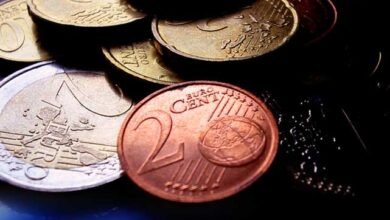Pound US Dollar Exchange Rate Forecast: 1.2775/1.2825 Range In Short-Term


The US Dollar (USD) was largely subdued as the week opened, amid surmounting expectations that the Federal Reserve may begin to reduce interest rates in September. In addition to this, Joe Biden dropped out of the US presidential race for 2024, imbuing markets with some volatility as political uncertainty swept across the US.
A risk-averse market sentiment then lifted the ‘greenback’ on Tuesday, owing to the currency’s safe-haven status. Following the People’s Bank of China’s surprise interest rate cut on Monday, concerns about the superpower economy saw investors favouring safer currencies.
On Wednesday, the US Dollar initially climbed higher as gloomy trade extended into European trading hours. However, the release of the latest US PMIs saw the ‘greenback’ retreat later in the session, as an unexpected contraction in domestic manufacturing weighed on USD exchange rates. Meanwhile, a surging US services PMI served to cushion the US Dollar’s losses, with the index reaching a twenty-eight-month high of 56.
On Thursday, the ‘greenback’ was able to recoup some of its previous losses as the latest US GDP release beat forecasts. The economy grew by 2.8% in the second quarter of 2024, surpassing market projections of a 2% expansion and leaping up from the previous quarter’s lacklustre 1.4% growth. However, a sharp and unexpected decline in US durable foods orders last month served to offset USD’s upside, leaving it to post only modest gains.
Friday saw the release of the core PCE price index in the US, which serves as the Fed’s preferred gauge of inflation. The index held steady at 2.6%, rather than edging lower ot 2.5% as economists had expected. This lent USD light support amid speculations that stickier-than-forecast US inflation could see the central bank defer monetary loosening until later in the year.
Pound (GBP) Strengthens following Strong UK PMIs
The Pound (GBP) traded sideways on Monday amid a lack of fresh UK releases. Meanwhile, concerns about UK government spending stymied GBP, amid news that Chancellor Rachel Reeves is considering a 5.5% public sector pay rise which could cost as much as £10 billion.
On Tuesday, GBP was mixed amid an ongoing lull in the British calendar, leaving Sterling to trade without a clear direction.
Wednesday saw GBP strengthen against the majority of its rivals following the publication of the UK’s latest preliminary PMIs. Both manufacturing and services showed increased output in July, lifting Sterling amid signs of continually improving economic activity in the UK private sector. Manufacturing saw its strongest growth in two-years amid a post-election ‘sruge in demand’, thereby bolstering the Pound against its rivals.
GBP then faced headwinds in the latter half of the week, as ramped-up Bank of England (BoE) interest rate cut speculations left GBP exposed to losses. A poll by international news agency Reuters showed that a large majority of economists surveyed expect the centrl bank to begin lowering interest rates next week.
As the week drew to a close, GBP traded in a wide range against its peer amid an absence of fresh UK releases. As markets continued to mull over whether the timings of the BoE’s first interest rate cut since 2020, Sterling struggled to find a clear direction.
Pound US Dollar Exchange Rate Forecast: Interest Rate Decisions in Spotlight
Looking ahead, both the Federal Reserve and the Bank of England are due to deliver their latest interest rate decisions this week.
Any dovish signals from either central bank could sink their respective currencies.
Source link






